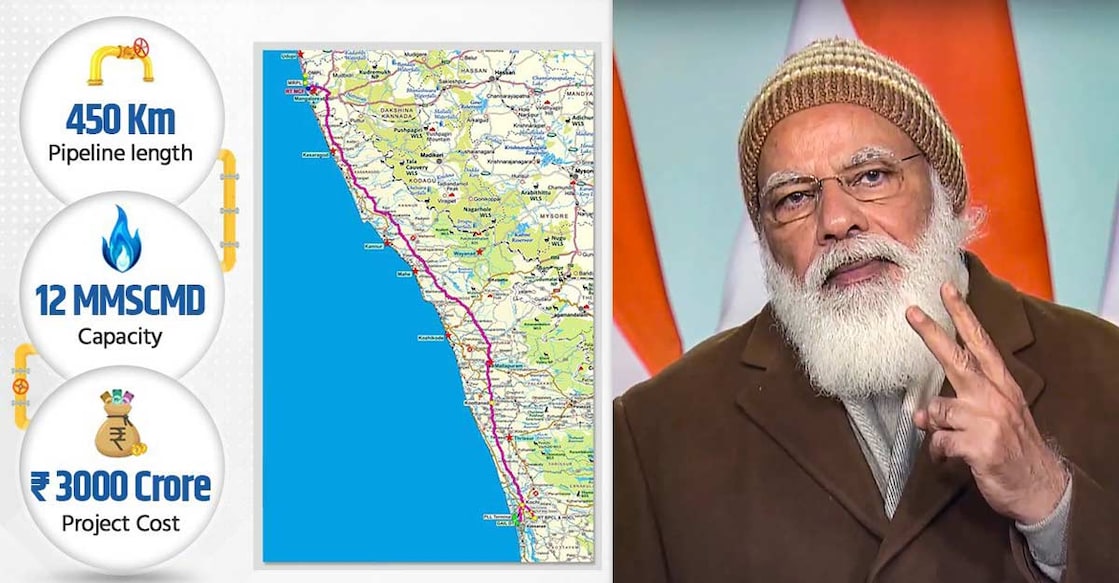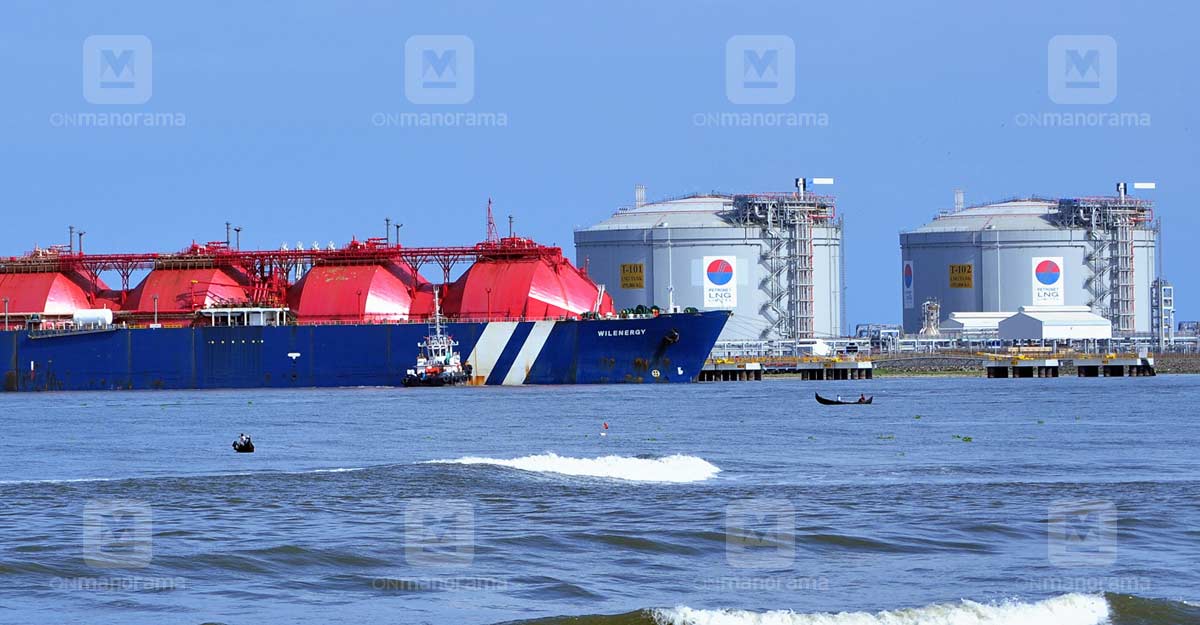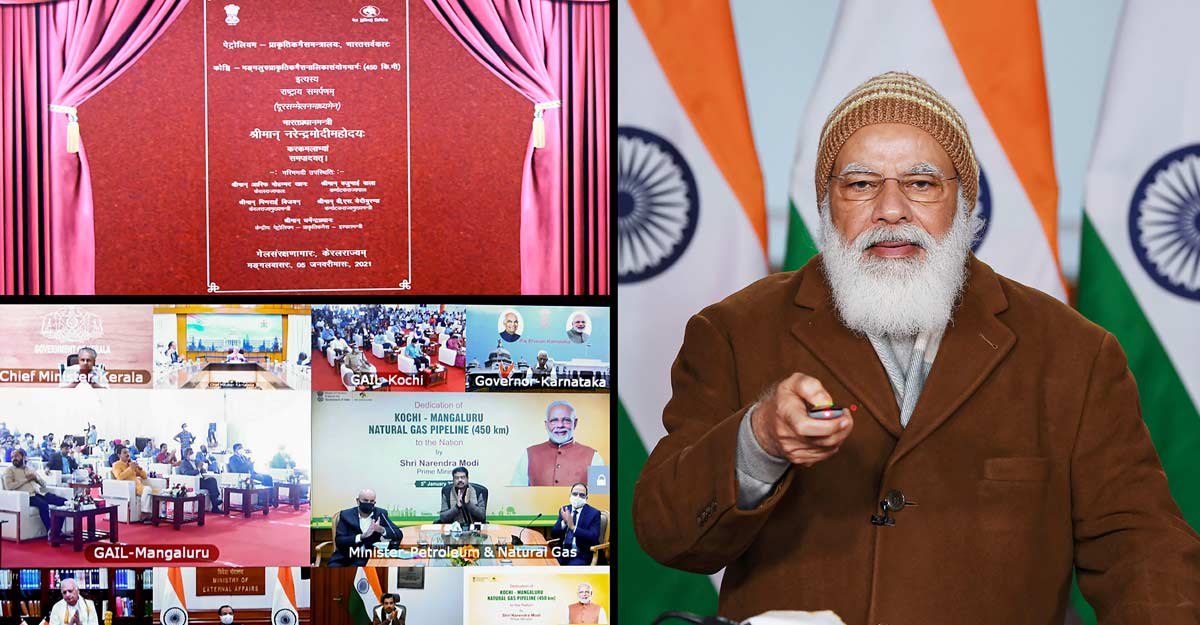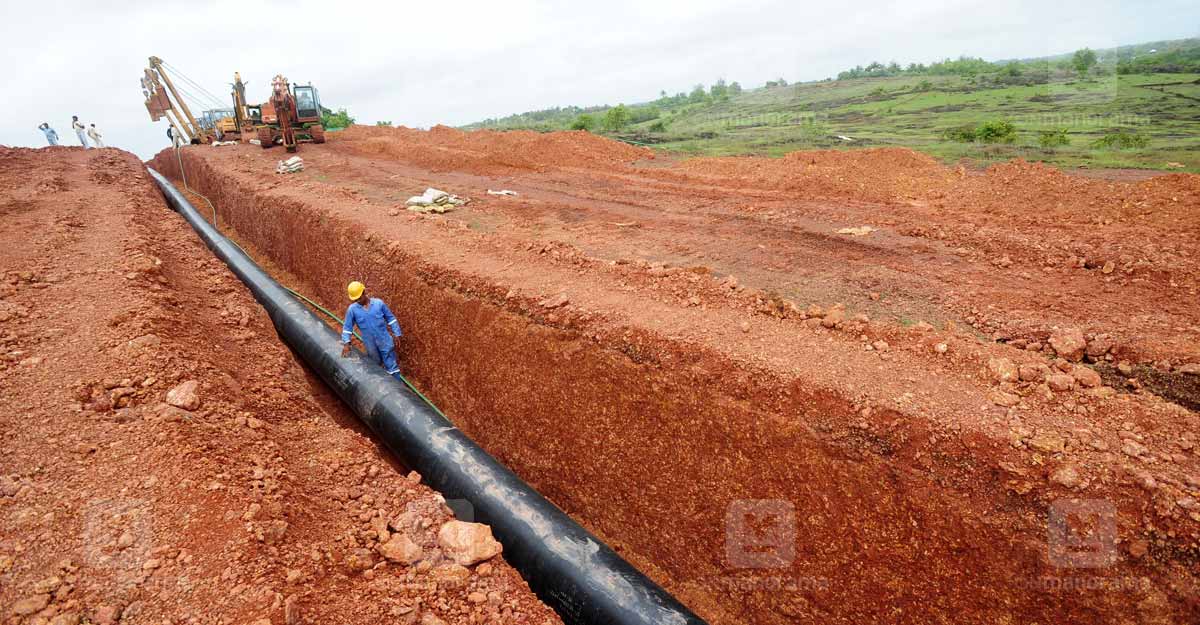A lowdown on the Kochi-Mangaluru natural gas pipeline

Mail This Article
The Kochi-Koottanad-Mangaluru liquified natural gas (LNG) pipeline project was commissioned on Tuesday. The 450-km natural gas pipeline from Kochi in Kerala to Mangaluru in Karnataka was built by GAIL (India) Ltd.
It took a decade-and-half to complete the project, which includes a Rs 4,200-crore LNG import terminal at Puthuvype in Kochi and the Rs 3,000-crore gas pipeline to Mangaluru.
But how will this Rs 7,200-crore project directly benefit the common people? The project promises 24-hour access to a green fuel at affordable rates to both domestic and industrial consumers.
Natural gas
Natural gas is a hydrocarbon gas mixture found beneath the surface of the earth. The primary constituent is methane. As the carbon content is relatively less, natural gas is environment-friendly. Traces of carbon dioxide, mercury, dust, and water are found in natural gas. After filtering these out, natural gas is converted into liquid form known as Liquified Natural Gas (LNG). It is liquified to overcome the difficulties in storing and transporting the gaseous form. In order to liquify, natural gas is cooled to minus 162 degrees Celsius.
LNG exporters
Countries such as Qatar and Australia are the top exporters of the LNG. The LNG imported from these countries, as per a long-term contract, are stored at the LNG terminal at Puthuvype in Kochi. The LNG is brought in special vessels (carriers) that have cryogenic chambers. From the vessels reaching the terminal jetty, the LNG is transported to two tanks through pipes. Each tank, with a diameter of 85mt, has a capacity to store 1.5 lakh kilolitres. Also, each tank is roughly the size of a football ground.

Supply starts from…
The Kochi-Mangaluru pipeline begins form the Puthuvype terminal. From this main pipe, the natural gas is distributed to industrial units and domestic sectors through small supply pipes. For this, there would be pigging and sectionalizing valve stations from the main pipeline. The natural gas is passed on to small supply pipes from these stations.
Will the consumption increase
With the commencement of the LNG supply to the Mangaluru industrial sector, the daily consumption from the Kochi-Mangaluru pipeline has reached an average of 45 lakh cubic metres. Around 8 lakh cubic metre gas is utilised in Mangaluru. The LNG consumption of the industrial sector in Mangaluru and Kerala is likely to increase to 110 lakh cubic metres within five years.
Domestic sector
LNG is not just an industrial fuel. By supplying to the households through small pipes, it can also be used for cooking as Piped Natural Gas (PNG). It can also be used as Compressed Natural Gas (CNG) for vehicles. The CNG is supplied via petrol bunks.
Beneficial for industries too
The LNG can be used both as fuel and a raw material in the industries. It can be utilised as a boiler fuel in the FACT for fertiliser manufacturing, and as a raw material in the ammonia plant. At the BPCL refineries in Kochi, LNG is being used for generating power. LNG is used instead of the more expensive diesel that power plants operate on. The LNG can be widely used as boiler fuel. A shift from LPG to natural gas for energy requirement is estimated to result in a profit of Rs 17/kg. Therefore, an industrial unit that consumes 5000kg of LPG daily could save around Rs 8.5 lakh per day.
Better mileage with CNG
The CNG is used as auto fuel. The LNG is converted to CNG by compressing it to a specific pressure. This is to pack more fuel in the smaller tanks of vehicles. The use of CNG will cut down the air pollution caused by vehicles to a large extent. By using CNG, the expense per kilometre would be only Rs 2-3 along with 25 to 30 per cent more mileage. The average expenses with diesel-petrol is about Rs 5 to 7 per kilometre. In contrast to the petroleum products, the LNG price is less prone to fluctuations. The KSRTC had decided to buy 310 CNG buses last year. The cost savings are estimated to be 30 per cent compared to diesel.

What is City Gas Project?
The City Gas Project aims to provide LNG to all households across the state from the Kochi-Mangaluru pipeline. The City Gas Project can be termed as a largescale LNG distribution network. Though the project was started in 2016, it saw only a partial implementation in the Kochi region alone. Though it has been five years since the project got sanction, only about 3,000 city gas connections have been given. The supply is so far restricted to Kalamassery and Thrikkakkara municipalities in Ernakulam. The pipe-laying work is progressing in some other municipalities too. The LNG would be first supplied to urban areas, to be followed by rural regions.
Tankers and accidents
The most-commonly used domestic fuel in the state is LPG. Huge tankers transport LPG from the Mangaluru terminal to the various bottling plants in Kerala. The LPG is filled in cylinders that are distributed to the households. Hundreds of tankers ply on the state roads, adding to risks of accidents and air pollution. If the LNG is widely distributed through pipes, then the number of LPG tankers on our roads would reduce. (With the same objective, the Indian Oil Corporation had tried to construct an LPG terminal at Puthuvype. But the project came to a standstill due to local protests. If this terminal had been completed, then the number of tankers would have reduced considerably.)
Reasons for the delay
The Indian Oil Adani Gas Private Ltd (IOAGPL) is implementing the project in eight districts, including Ernakulam. One of the main reasons for the project moving at a snail’s pace was the delay in getting the approvals from local self-governing bodies. Also, the floods in two consecutive years and the COVID-19 pandemic also delayed the project. The government gave strict instructions to the local bodies two months ago that the technical approvals for the City Gas Project should be given within 21 days of receiving the applications.

What does the govt gain
With increase in consumption of the natural gas, the government would get about Rs 980 crore by way of taxes. Currently, the government gets around Rs 300-350 crore.
Which fuel is better in kitchen
The LNG costs 30 per cent less than the LPG. Also, it would be available 24 hours in the kitchen. The availability of the natural gas would not be affected due to a general strike or traffic snarls. Even though there is subsidy for LPG, the entire amount has to be paid first. The subsidy amount is remitted to the bank account later. But in the case of LNG, only the quantity consumed, i.e. the rate as per the metre, needs to be paid for. Connection needs to be taken from the respective agencies that are implementing the project in each district.
Why LNG
The biggest advantage is that LNG costs less than other domestic-industrial fuels such as Naphtha, LPG and petrol / diesel. As the carbon content is less, air pollution would also be less. Most countries aim to reduce or completely stop the use of diesel within a few years. Therefore, natural gas, as the fuel that does not pollute, has immense possibilities. Also, 24-hour availability through the pipeline is another highlight.
Is LNG safe?
Compared to the LPG, the LNG is safer. While LPG is stored in cylinders in the kitchen, the LNG is supplied to the house through pipes at low pressure. Unlike LPG, which has a higher density, natural gas would not remain in the room in case of leakage and thereby reducing the risk of accidents. Also, in comparison to LPG, combustion of LNG occurs only at high temperature. The LNG terminal and pipeline have been constructed as per international standards. There is also a 24-hour surveillance system.
When will the other districts get LNG?
Eleven districts have got permission for the City Gas project. Of this, Atlantic Gulf And Pacific Ltd is implementing the project in Thiruvananthapuram, Kollam and Alappuzha districts. The IOAGPL is implementing the project in the remaining districts. No licences have been sanctioned for Idukki, Kottayam and Pathanamthitta districts. In Ernakulam district, households spread over more areas would get LNG this year. In other districts that got sanctions, the pipe-laying work is at various stages. It is expected that the LNG would be made available, at least partially, this year itself.

